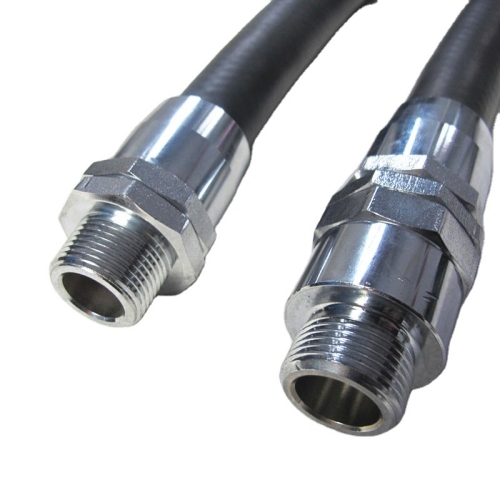335345435
Nov . 29, 2024 21:08 Back to list
Production of Durable Thermoplastic Hoses in an Innovative Manufacturing Facility
The Evolution and Significance of Thermoplastic Hose Manufacturing
Thermoplastic hoses have become a critical component across various industries, offering versatility, strength, and durability. The manufacturing of these hoses, particularly in dedicated thermoplastic hose factories, showcases technological advancements and a deep understanding of material science. This article delves into the significance of thermoplastic hoses, the manufacturing process, and the factors contributing to their rising popularity.
Understanding Thermoplastic Hoses
Thermoplastic hoses are made from high-performance thermoplastic materials that exhibit unique properties, including flexibility, resistance to chemicals, and the ability to withstand high pressures and temperatures. Unlike rubber hoses, thermoplastic hoses can be melted and remolded without significant degradation, making them an eco-friendly choice as well. Common applications include automotive, aerospace, agricultural equipment, and industrial machinery.
Manufacturing Process
The manufacturing of thermoplastic hoses involves several key steps
1. Material Selection The process begins with selecting the appropriate thermoplastic resin. Materials such as polyethylene, nylon, and polyurethane are common choices due to their favorable properties.
2. Compounding In many cases, the base resin is compounded with additives to enhance its performance. Additives may include UV stabilizers, antioxidants, and colorants, providing the hose with additional resistance to external factors.
3. Extrusion The compounded resin is then fed into an extruder, where it is heated and forced through a die. This process shapes the molten plastic into a continuous hose of the desired diameter and configuration. Advanced extrusion technologies enable manufacturers to create hoses with varying wall thicknesses and internal designs.
4. Reinforcement For applications requiring additional strength, the hoses are often reinforced with materials such as textile fibers or steel wire. This reinforcement is crucial for high-pressure applications, providing stability and preventing deformation under stress.
5. Cooling and Sizing Once extruded, the hoses are cooled to solidify the thermoplastic material. A sizing calibrator may be used to ensure uniform diameter and wall thickness.
thermoplastic hose factory

6. Testing and Quality Control After production, each batch of thermoplastic hoses undergoes rigorous testing to ensure they meet industry standards. Tests may include pressure testing, burst testing, and flexibility assessments. Quality control is vital to ensuring reliability and performance in real-world applications.
7. Packaging and Distribution Finally, the hoses are cut to specified lengths, coiled, and packaged for distribution. Many manufacturers also offer customization options, catering to specific customer requirements.
Advantages of Thermoplastic Hoses
The increasing preference for thermoplastic hoses over traditional rubber hoses stems from several advantages
- Lightweight Thermoplastic hoses are significantly lighter than rubber hoses, making them easier to handle and reducing overall equipment weight.
- Enhanced Flexibility These hoses maintain flexibility even at low temperatures, which is crucial for applications exposed to extreme environments.
- Chemical Resistance Thermoplastic materials typically exhibit superior resistance to a wide range of chemicals, enabling them to be used in industries such as chemicals, pharmaceuticals, and food processing.
- Eco-Friendly The ability to recycle thermoplastic materials aligns with sustainability efforts in manufacturing. Many thermoplastic hoses are designed for end-of-life recycling, significantly reducing their environmental impact.
- Cost-Effectiveness While the initial investment might be higher, the durability and reduced maintenance needs of thermoplastic hoses often result in lower long-term costs.
Conclusion
Thermoplastic hose factories play a vital role in meeting the demands of a rapidly evolving industrial landscape. As industries continue to seek solutions that enhance efficiency, reduce weight, and improve performance, the significance of thermoplastic hoses will undoubtedly grow. Continued innovations in material technology and manufacturing processes will further reinforce the relevance of thermoplastic hoses, ensuring they remain a preferred choice for diverse applications in the years to come. In a world increasingly focused on sustainability and efficiency, thermoplastic hoses embody the future of flexible piping solutions.
-
SAE 100 R17 Black Smooth Cover Hydraulic Hose
NewsMar.07,2025
-
SAE 100 R17 Black Smooth Cover Hydraulic Hose
NewsMar.07,2025
-
SAE 100 R17 Black Smooth Cover Hydraulic Hose
NewsMar.07,2025
-
SAE 100 R17 Black Smooth Cover Hydraulic Hose
NewsMar.07,2025
-
SAE 100 R17 Black Smooth Cover Hydraulic Hose
NewsMar.07,2025
-
steel wire braided hydraulic hose
NewsMar.07,2025



